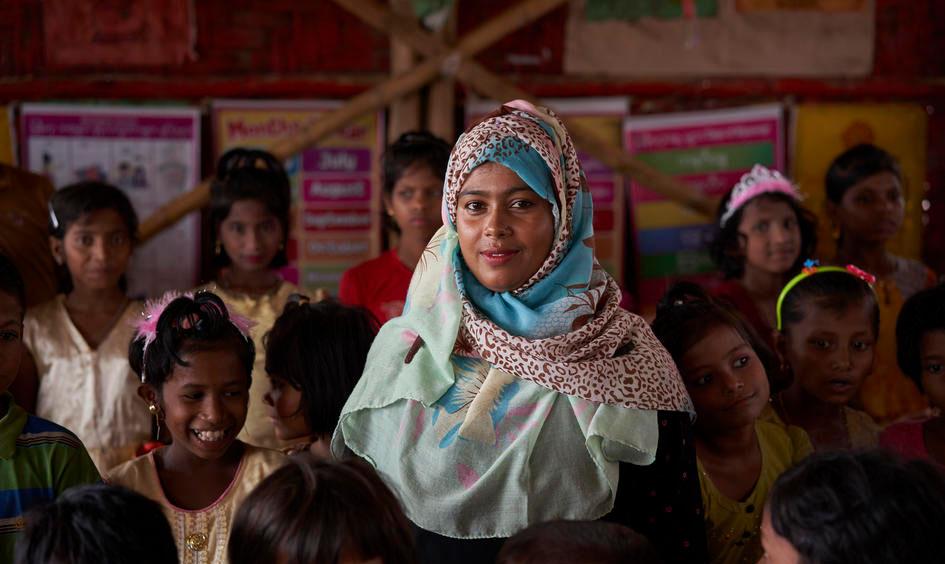Contact details
Submitted by: Neveen El Husseiny, Minister Plenipotentiary, Head of Migration, Refugees and Combating Human Trafficking Unit, Ministry of Foreign Affairs, Egypt
Email: [email protected]
Social: facebook.com/takween.icd/
Introduction to the project
Country
Arab Republic of Egypt
Duration
Phase 1 (development of the upgrading plan) began in January 2017.
Phase 2 (detailed technical upgrading plans and Bills of Quantities to be furnished by CA for bidding) began in January 2018.
Technical upgrading plans and bills of quantities were handed over to the city administration on 6th of October. Implementation is ongoing.
Description
A technical detailed plan to upgrade the central economic hub of 6th of October City - hosting more than 40,000 refugees and asylum-seekers - was developed in cooperation with the city administration and a private consultancy in participative urban upgrading and development initiatives (Takween).
Project aims
- To reduce pressure on local hosting areas through facilitating technical support for comprehensive upgrading programmes to a business hub in a hosting area with high concentration of refugees and asylum-seekers.
- To increase the absorption capacity of an overstretched economic hub.
- To work closely with relevant actors from the Government of Egypt on reducing pressures on and managing urban areas hosting refugees and asylum-seekers.
Resources used
- The cooperation and readiness to share burden of the city administration of 6th of October.
- The cooperation and support of the local business men, street vendors, users and shopkeepers to facilitate a participatory planning for the upgrading plan.
Partners
- City administration of 6th of October (new urban communities’ authorities) under the Ministry of Housing
- Takween (Community development company, social enterprise)
- UNHCR Egypt
Challenges and how they were overcome
Challenges:
- To generate consensus on the shape of the upgrading plan between different stakeholders and users, especially the street vendors and the shopkeepers.
- To obtain the city administration’s acceptance of the in-situ relocation of the street vendors and the provision of space for expansion of some shops.
- To obtain the city administration’s approval of the requests by vendors/shopkeepers and to get (some of) these reflected into the plan and subsequent implementation.
- To tackle the issue of “learned helplessness” (the feeling that they are unable to change the situation) among vendors and users of the area.
How they were overcome:
- Elaborating on the outcomes and on the possible negative and unintended impacts that each proposal may have as well as providing alternative plans.
- The openness of some actors in the city administration – the ultimate decision-maker – and their goodwill to find a compromise by accepting some of the inputs that are in favour of the users of the area.
Results of the Good Practice
- The project has been developed with an area-based approach. Local areas are considered as spaces of shared ownership, and their capacities to absorb and provide services as spaces of opportunity and responsibility to all those living within, including local hosting community and refugees.
- The participative approach in addressing needs and prioritizing them has created a sense of accountability and ownership, and increased interaction among refugees and host community.
How the project meets the GCR Objectives
Objective 1: Ease the pressures on host countries
Objective 2: Enhance refugee self-reliance
The area of 6th of October City (Cairo) hosts more than 40,000 refugees and asylum-seekers registered with UNHCR. A participatory upgrading plan of the “Amriekiya area”, an economic hub in the central area of 6th of October City, was developed at the benefit of refugees and the host community.
The project contributed to foster development plans for areas hosting refugees and asylum-seekers. This was achieved through the development of a technical detailed plan to upgrade the central economic hub of 6th of October City in cooperation with the city administration and a private consultancy in participative urban upgrading and development initiatives (Takween). The central hub accommodates around 6,000 refugee and Egyptian workers/small businesses and vendors. The detailed study with executive drawings and bill of quantity was delivered to the city administration. The plan is being currently implemented by the city administration with their own resources.
Next steps
The technical reports and studies were delivered to the city administration in addition to the Bill of Quantities (BoQ) for bidding. The project is now under implementation and it is funded by resources that the city administration has for upgrading projects. UNHCR maintains a close relationship with the city administration which provides updates on the implementation process.


